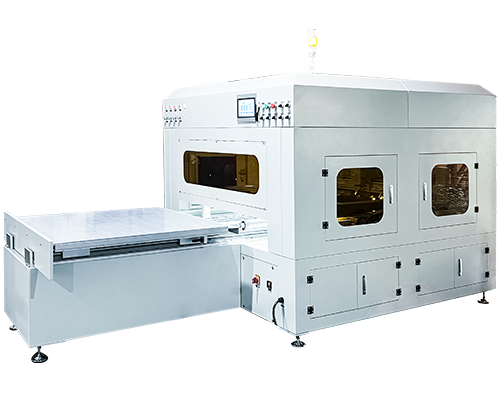Proton Exchange Membrane Hydrogen Electrolyzers Spraying
Application of ultrasonic sprayer in proton exchange membrane hydrogen electrolyzers spraying.
In today’s energy transformation era, proton exchange membrane electrolysis water hydrogen production technology is gradually emerging and becoming one of the key ways to achieve green hydrogen production. In this technology, the electrolyzer is a core component, and its surface treatment process plays a vital role in hydrogen production efficiency and stability. The introduction of ultrasonic sprayer has brought new breakthroughs and opportunities for the spraying of proton exchange membrane electrolysis water hydrogen production electrolyzer.
The working principle of the proton exchange membrane electrolysis water hydrogen production electrolyzer is based on the transfer of protons through the proton exchange membrane under the action of an electric field to achieve the electrolytic decomposition of water to produce hydrogen and oxygen. In order to ensure efficient electrolysis reaction, the surface of the electrolyzer needs to have good conductivity, chemical stability and catalytic activity. Ultrasonic sprayer plays a unique advantage in this regard.
Ultrasonic sprayer atomizes the spray material into extremely small particles through high-frequency vibration, which can evenly cover the surface of the electrolyzer. In the spraying of the proton exchange membrane water electrolysis hydrogen production electrolyzer, it can accurately spray catalysts, conductive materials, etc. onto the electrode surface to form a uniform and thin coating. This uniform coating helps to increase the active surface area of the electrode and enhance the charge transfer efficiency, thereby increasing the reaction rate of water electrolysis hydrogen production.
Compared with traditional spraying methods, ultrasonic sprayers have higher precision and controllability. It can accurately adjust the spraying angle, speed and coating flow rate according to the design requirements and process parameters of the electrolyzer to ensure the consistency and uniformity of the coating in different parts. This is especially important for electrolyzer structures with complex shapes, which can avoid performance differences caused by excessive thickness or thinness of local coatings.
In addition, ultrasonic sprayers can also achieve uniform spraying of nano-scale materials. In proton exchange membrane water electrolysis hydrogen production, nano-scale catalysts and conductive materials have higher catalytic activity and conductivity. Ultrasonic sprayers can evenly disperse and fix these nano-materials on the surface of the electrolyzer to give full play to their excellent performance. At the same time, due to its gentle spraying process, it can reduce damage to sensitive materials such as proton exchange membranes and ensure the overall performance and stability of the electrolyzer.
In practical applications, ultrasonic spraying machines still face some challenges in spraying proton exchange membrane water electrolysis hydrogen production electrolyzers. For example, the selection and optimization of spraying materials need to comprehensively consider factors such as their electrochemical properties, stability and cost. In addition, the determination of spraying process parameters requires a lot of experiments and optimization to achieve the best hydrogen production effect. At the same time, the maintenance and operation of the equipment also require professional technicians to ensure its long-term stable operation.
However, despite the challenges, the application prospects of ultrasonic spraying machines in spraying proton exchange membrane water electrolysis hydrogen production electrolyzers are still broad. With the continuous advancement and innovation of technology, it is believed that ultrasonic spraying machines will continue to improve and optimize, providing more powerful support for the large-scale application of proton exchange membrane water electrolysis hydrogen production technology.
In short, as an advanced surface treatment technology, ultrasonic spraying machines have injected new vitality into the performance improvement and development of proton exchange membrane water electrolysis hydrogen production electrolyzers. Through precise and uniform spraying, it helps to improve the hydrogen production efficiency, stability and durability of the electrolyzer, opening up a new way to achieve green and sustainable hydrogen energy production. In the future energy field, ultrasonic spraying machines are expected to play a more important role in the development of proton exchange membrane water electrolysis hydrogen production technology and promote the vigorous development of the hydrogen energy industry.
About Cheersonic
Cheersonic is the leading developer and manufacturer of ultrasonic coating systems for applying precise, thin film coatings to protect, strengthen or smooth surfaces on parts and components for the microelectronics/electronics, alternative energy, medical and industrial markets, including specialized glass applications in construction and automotive.
Our coating solutions are environmentally-friendly, efficient and highly reliable, and enable dramatic reductions in overspray, savings in raw material, water and energy usage and provide improved process repeatability, transfer efficiency, high uniformity and reduced emissions.
Chinese Website: Cheersonic Provides Professional Coating Solutions


